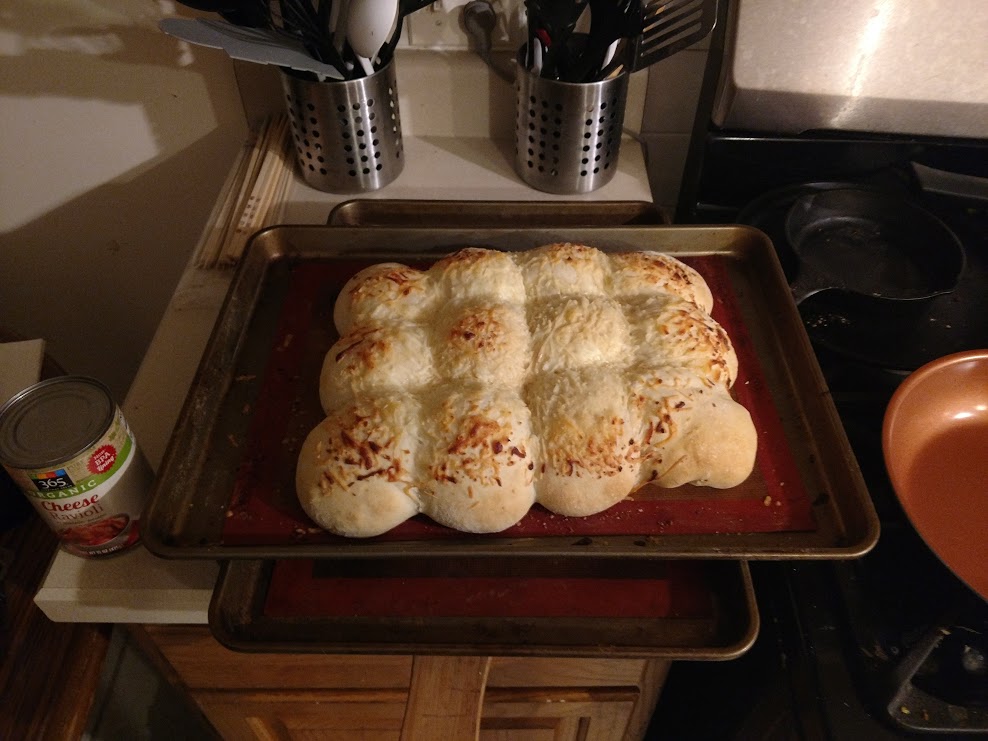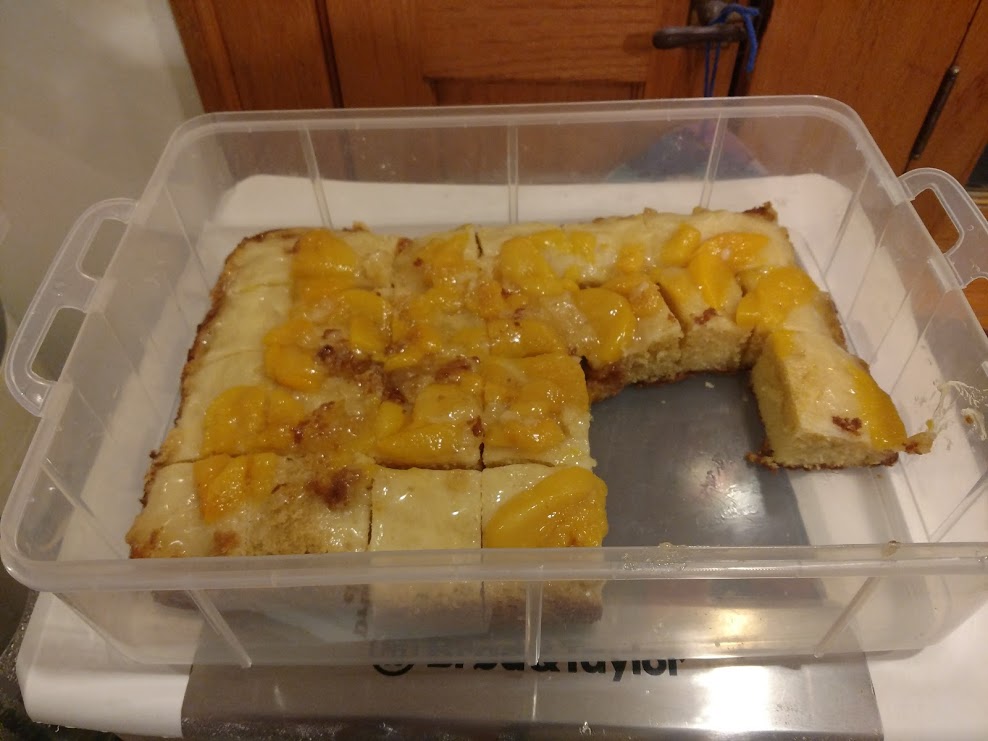Here is a glossary of medieval cooking terms.
And American Cookery (the first American cookbook) over at Project Gutenberg.
Historical and Modern bakes
Here is a glossary of medieval cooking terms.
And American Cookery (the first American cookbook) over at Project Gutenberg.

Having forgot to add salt to the last time I made this recipe, I decided to try it again with salt and see how it taste. Kidding. I changed a few other things around.
Mix all of the ingredients into a bread dough, prove until doubled in size (probably an hour at 82 degrees).
Divide into 12 equal sized pieces. Roll flat, and put 10g of cheese in the middle and fold into a ball.
Place together on a cookie sheet seam side down and cover with cheese. Allow to rise for another hour or so.
45 minutes into the second prove, pre-heat oven to 350 (assuming your oven needs 15 miutes to heat).
Bake for 20-25 minutes.


Adapted from King Arthur Flour’s molasses poundcake.

Sort of. Cookpad lets you type in a list of ingredients and it spits back a set of recipes.
It’s pretty useful if you want to see what you could make with, say, gingerbread spices and anise extract.
Found a pfeffernusse poundcake recipe there.
I’m going to synthesize it with the molasses poundcake recipe.
Found a reference to the English Huswife (text transcription) which led to the following:
There’s also a list of old cookbooks and you can find digitized versions of some of them:
I’m not sure it’s worth the time to ‘translate’ the recipes and convert the measures to something I could use.
Foods of England is an interesting website, as well.
Part of me keeps wanting to make historical recipes, like the original gingerbread recipe from American Cookery.
Then I realize I don’t really want to have to source pearlash. Even though I can substitute.
Anyway, gingerbread has a long history, and it’s pretty cool (link is a recipe for each of the last 5 centuries).
Here’s another historical gingerbread recipe. (side note: it alleges to be a 17th century recipe, but it calls for baking powder)
Another historical gingerbread recipe.
Tollhouse cookies, substitute 1/4 cup cocoa powder for 1/4 cup flour (so add 2c. flour), and andes mint chips instead of chocolate morsels:

Coffeecake batter with a can of peach pie filling in the bottom.
Peaches stuck to the pan, and I had to scrape them off and put them back on top. Also I tried to take it out before it cooled, being paranoid about it sticking, and that did not go well.
